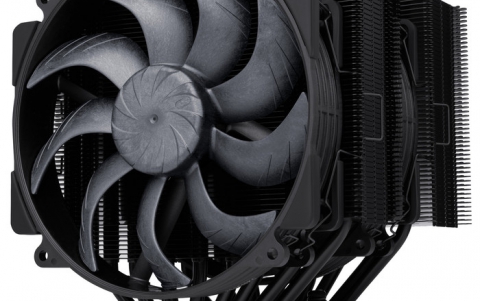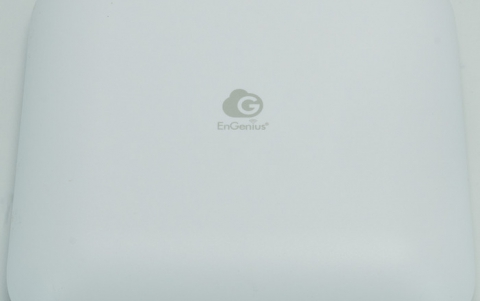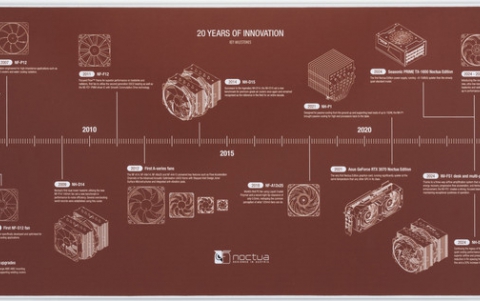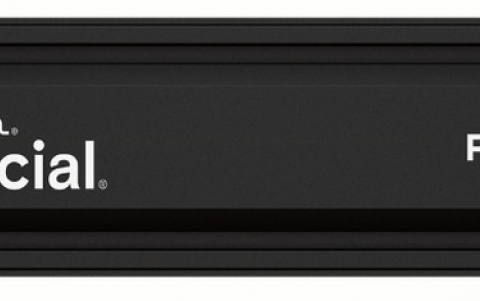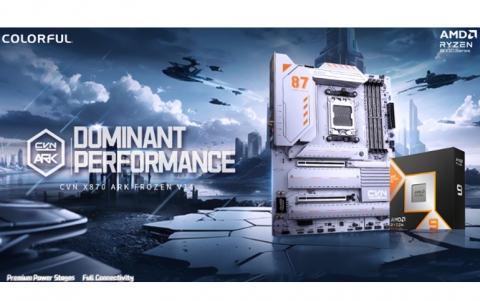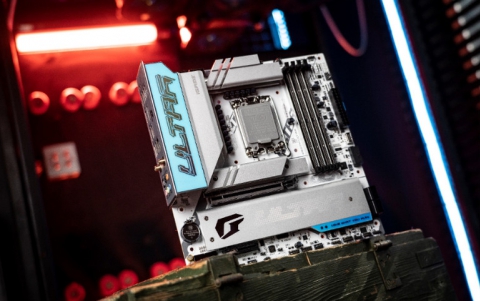1.3GB Fujitsu Magneto-Optical MCE 3130 AP and SS
2. An outline of Magneto-optical technology
An outline of Magneto-optical technology
Let us first understand how writing and reading takes place on a magneto-optical medium. (The various graphs we will use below for illustration purposes are due to Fujitsu, Konica and other manufacturers of the magneto-optical alliance).
Write/erase cycle
Inside a 3.5” case, the MO disk consists of a series of layers, each one of them offering support to distinct aspects of the implementation of the respective technology.
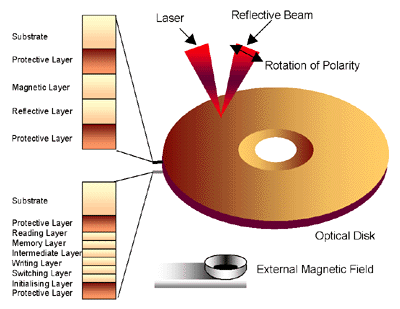
First, a “high” power laser-beam raises the temperature of a particular point at the active layer on a MO medium. When at the same time BIAS magnetic field is applied perpendicularly to the medium, the local temperature of the particles at the region of this point goes up to the "Curie point (180-200 °C). Then, the direction of magnetization on this particular point becomes reverse (angle change). After the laser beam is switched off, the magneto-optical layer cools down very rapidly. The information is then fixed on the medium and it can be altered only by using a laser beam and a BIAS magnet again. The data is more securely stored compared to conventional magnetic disks, on which even a small magnet can cause loss of data.
The operation of erasure follows the same principles as above.
Direct overwrite technology (DOW)
With conventional MO recording technology, 3 rotations (erasing, writing and verification) are necessary to write data onto a disk. A new MO recording technique, called Laser Intensify Modulation - Direct Overwrite (LIM-DOW), enables the erasing and writing functions to occur simultaneously; i.e., the writing operation can be performed by only one rotation (direct overwrite).
Taking into account that due to current limitations of the new technique the rotation speed of the disk is forced to be lower during writing, the LIM-DOW technology delivers just 1.5 times faster writing performance than traditional writing methods (instead of a 3-fold speed increase as expected). This technology requires that the laser and the other drive electronics that control the functioning of the beam to be able to modulate at 3 distinct levels. Additionally, new media should be formulated containing 6 different layers. These layers consist of different material mixtures as follows: Read out layer (GdFeCo), Memory layer (TbFeCo), Intermediate layer (GdFeCo), Writing layer (DyFeCo), Switching layer (TbFeCo), and Initializing layer (TbFeCo).
The reading operation
When reading data on the MO disk, the application of an external magnetic field is not required. The entire reading operation is processed optically. A laser beam with less energy than that used for the writing process is projected to the MO disk to detect the points that where polarized during writing. Then, the polarized angles are converted to electric signals. Demodulation and error correction is then applied to deliver the 1’s and 0’s of the originally written information on the disk.
The MSR Technology

To achieve more than 1GB of written data onto a single disk, a new optical detecting scheme has been developed by Sony and Fujitsu called MSR (Magnetically induced Super Resolution) technology. The MSR technology enables doubling of track-density and recording-density while being able to keep full compatibility with respect to the original ISO Standards for Magneto-Optical recording.
GIGAMO™ is the name of the new standard for the case of 3.5-inch magneto-optical disks. It can achieve capacities of 1.3GB per disk, or more (2.6 are on the horizon and 5.2 and 9.1GB are promised to follow). Please note that GIGAMO is not the name of any particular MO product.
The GIGAMO standard specification is based on media of identical physical dimensions with earlier MO disk formats. Both disk drives and cartridge cases based on the current ISO/IEC standards are fully utilizable on drives based on the new technology. As a matter of the MO alliance manufacturers’ decision it thus retains full compatibility with all existing media. In many cases existing disk writing/reading speed performance increases. This will be exhibited in the following test sections.
GIGAMO was jointly developed by Sony and Fujitsu, with Sony taking responsibility for the media and Fujitsu for the disk drive development.
Major drive manufacturers such as Olympus and Konica, and media makers like Kyocera, Teijin, Toso, Hitachi- Maxell, Mitsubishi Chemical, Phillips/PDO, and recently Ritek (the largest Chinese optical/magneto-optical media manufacturer in Taiwan mainland) have all agreed to support the new GIGAMO standard.
The reader can find more details on MSR technology in Appendix II of this review.


